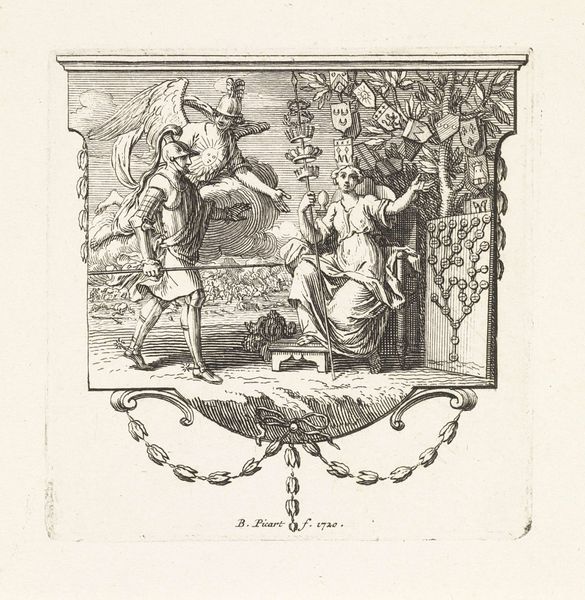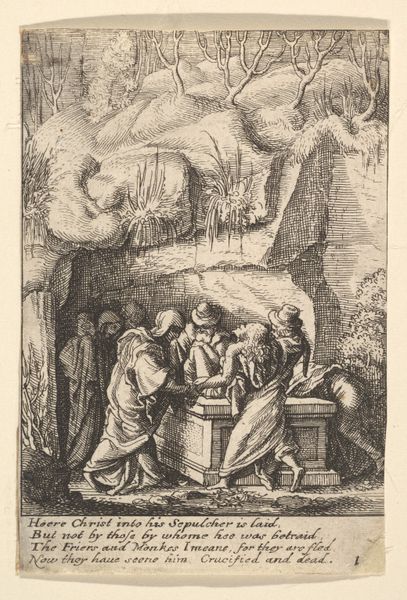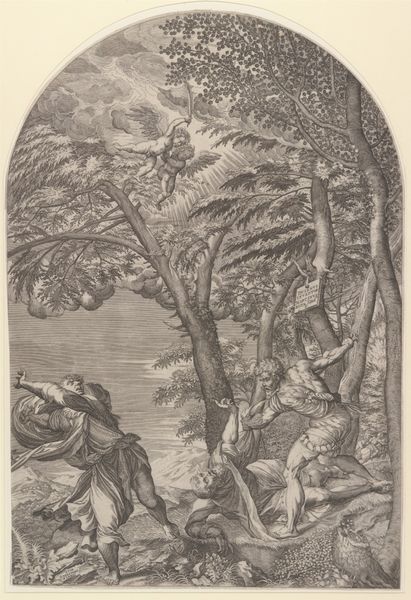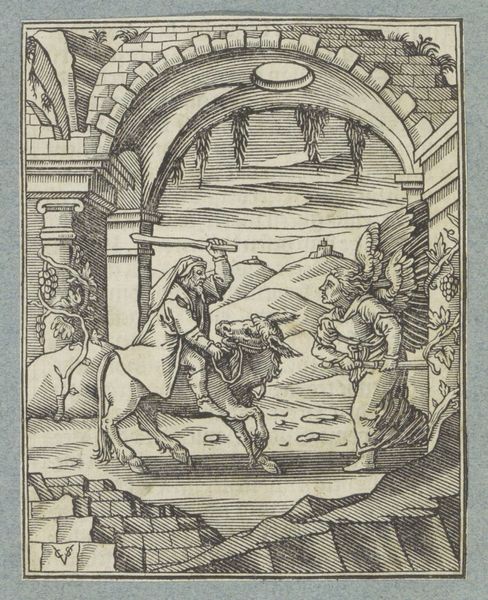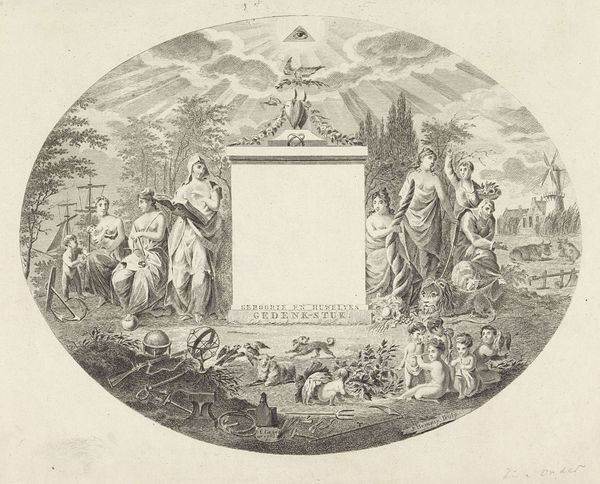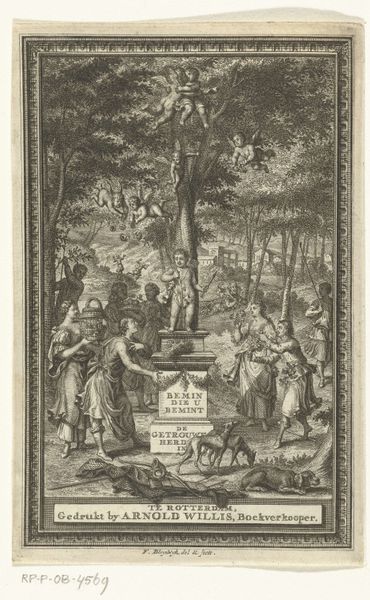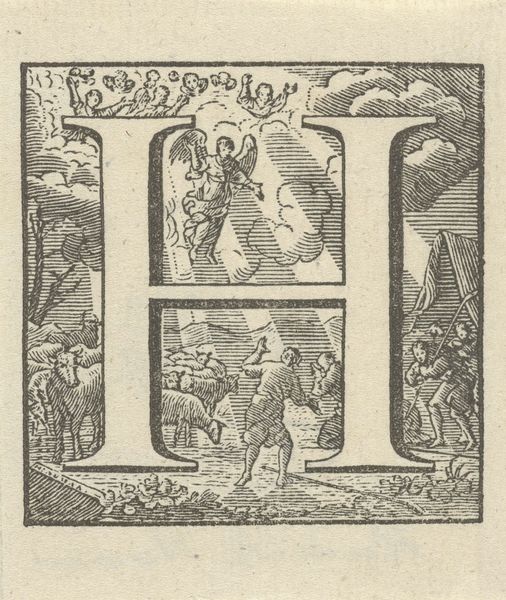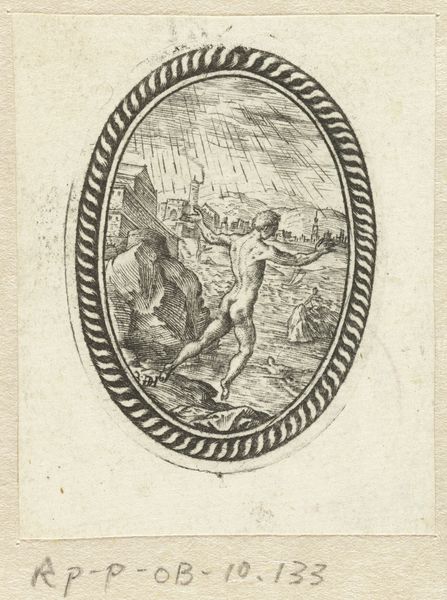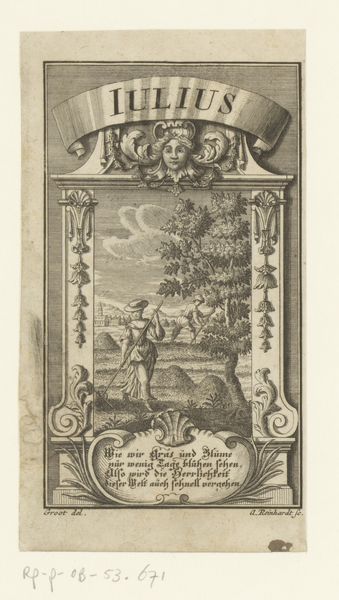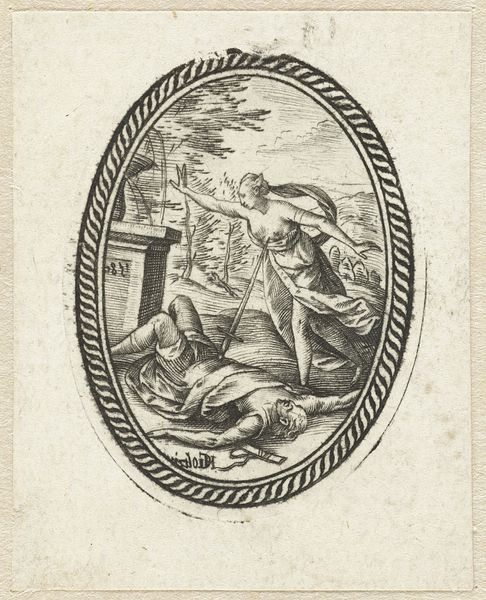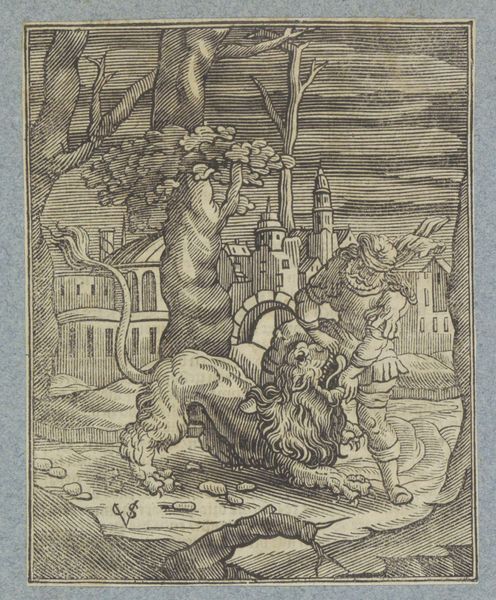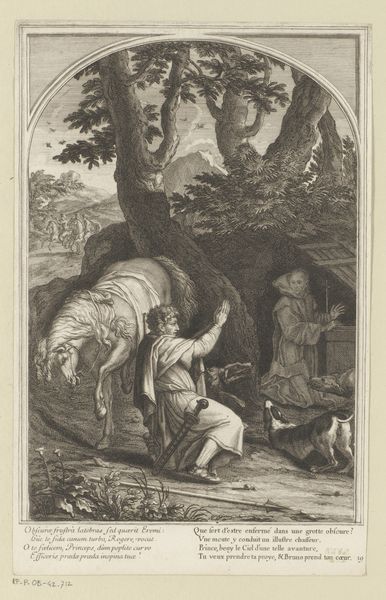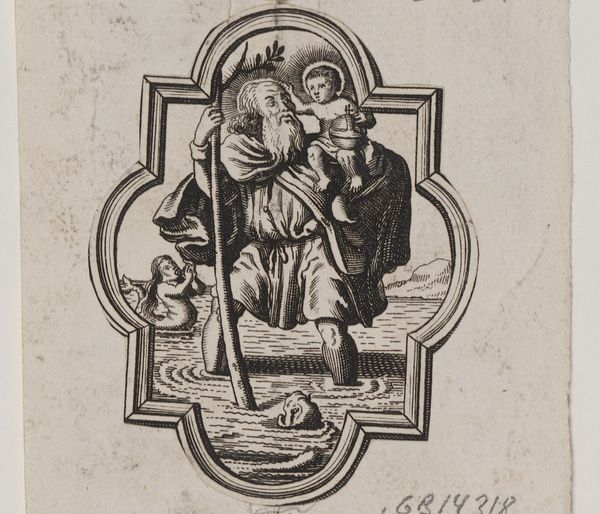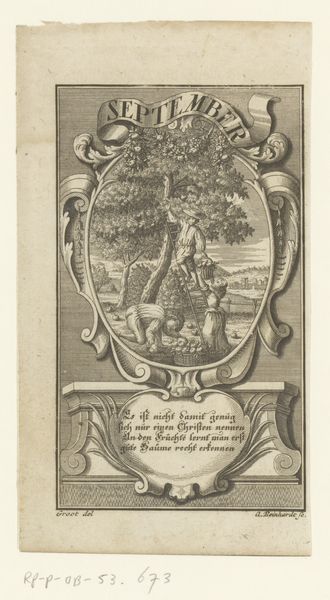
print, etching, engraving
# print
#
etching
#
landscape
#
perspective
#
figuration
#
line
#
history-painting
#
northern-renaissance
#
engraving
Dimensions: height 91 mm, width 69 mm
Copyright: Rijks Museum: Open Domain
Curator: Here at the Rijksmuseum, we have on display "Spreuken van Salomo, rechterdeel," or "Proverbs of Solomon, Right Part," an engraving and etching by Gerard de Jode, likely made between 1547 and 1591. My initial impression is one of meticulously rendered details—the cross-hatching giving shape and form in a stark, but delicate way. Editor: I'm immediately struck by the duality. The men examining something below while above and behind them, almost separate from them, is a landscape containing a deer drinking water. It evokes both careful observation and a somewhat detached perspective. Curator: I see that duality too, particularly through the lens of water symbolism. The foreground depicts figures, presumably examining an object beneath the surface of a body of water in what looks to be a reflecting pool, suggesting a dive into something deeper—perhaps wisdom, mirroring the title referencing Solomon’s proverbs, famous for containing wise judgements on earthly matters. Water has a tradition of symbolism. From birth and creation, water is usually associated with cleaning and spiritual renewal. Editor: Yes, that contrast between the literal scrutiny and the implied symbolism is compelling. Formally, de Jode uses a limited palette, relying on the varying density of line work to suggest depth, texture, and light. There's a wonderful push-and-pull created by the perspective, drawing us in. Look at the strong, structural use of linear patterns along the body of the rectangular well-like basin: very compelling and geometrically sound for a small-format work. Curator: The deer, though small in scale compared to the foreground figures, becomes powerful. Deer have carried various spiritual significances across cultures and generations and continues into modern times. Drinking water signifies the quenching of spiritual thirst—suggesting both men could be thirsting for and even gaining greater awareness of something more than just earthly matters. The artist seems to use these dualistic figures to represent all levels of creation from humanity to animal. Editor: The formal arrangement emphasizes that link too—it suggests a continuous flow. The hard lines create geometric volume to one side, as an artistic container of wisdom itself, and this contrast to the openness of nature that gives space and depth to the forest. Curator: Thinking about how cultural memory and continuity are conveyed through visual symbols like these, what stands out to me is the accessibility of the wisdom—presented almost like something attainable, reflective, or to be discovered rather than passively received. Editor: And for me, considering the structural composition and how de Jode’s graphic vocabulary makes visual meaning, it’s a great reminder of how much information can be conveyed through careful observation of details like perspective and light.
Comments
No comments
Be the first to comment and join the conversation on the ultimate creative platform.
